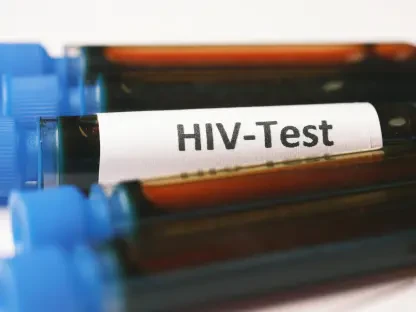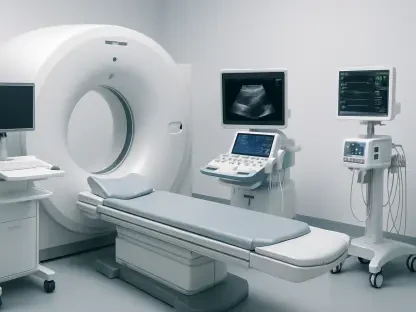James Maitland is a recognized authority in the field of robotics and IoT applications within the healthcare industry. His dedication to using technology to enhance healthcare solutions has made him a leading voice in discussions about policy and innovation. Today, we explore a significant court ruling with implications for healthcare providers and the broader medical community, delving into the context and possible outcomes of recent legal decisions.
Can you explain the significance of the U.S. district court’s ruling in favor of Doctors for America regarding the restoration of HHS webpages?
The court’s decision is critical because it upholds the necessity of accessibility to vital healthcare information that healthcare providers rely on for day-to-day operations. By ordering the restoration of these web pages, the ruling underscores the importance of these resources in enabling doctors to provide effective patient care and not having them arbitrarily removed.
What webpages and datasets were removed by the HHS, and why were they targeted under Trump’s executive order?
The HHS removed websites and datasets that were deemed to promote “gender ideology.” As per the executive order, documents that used gender-related terminology instead of strictly biological terms were targeted. This included broad-ranging data that, while possibly tangentially related to gender ideology, served critical functions in healthcare guidance.
How did the removal of these webpages affect healthcare providers’ ability to perform routine patient care tasks?
The removal significantly hindered healthcare providers because these online resources contained essential guidelines and data. Without them, doctors had to spend additional time seeking out necessary information from other sources, which meant they saw fewer patients and their capacity to provide timely and informed care was compromised.
Could you provide specific examples of the types of information that were missing, like the guidance on prescribing HIV medication or contraception options?
Certainly. Some of the missing information included guidance on prescribing HIV prevention medications and various contraception options. These are crucial components for practitioners working in areas like sexual health and preventive medicine, as they rely on up-to-date guidelines to offer the best care to their patients.
How did Dr. Han Yu Stephanie Liou describe the impact of losing access to these CDC materials on her practice in Chicago?
Dr. Liou described it as a significant disruption. Without access to the CDC’s comprehensive materials, she found herself spending valuable time gathering information from less centralized sources, which in turn limited the number of patients she could attend to efficiently.
What did Judge John Bates mean by the agencies’ “remove first and assess later” approach?
Judge Bates criticized this approach as being reckless and poorly thought out. It implied that the agencies acted without fully understanding the implications of their actions, hastily removing information without considering the critical role these documents played for healthcare providers.
Why did the judge find the agencies’ method of removing entire webpages inappropriate, especially when they included minimal references to “gender ideology”?
The judge highlighted that the approach was excessive. Many of the pages had only minor references to gender ideology, so deleting entire pages appeared disproportionate. Bates suggested that it was possible to address concerns more surgically without obliterating valuable information.
What legal right does the Trump administration have to uphold the executive order, according to Bates’ ruling?
While Bates acknowledged that the administration had legal standing to fulfill the executive order, he emphasized that they needed to operate within the bounds of the authority and procedures set by Congress. The execution of the order was where Bates found fault, particularly concerning how it was implemented.
How did Bates justify allowing the Trump administration to potentially take another approach to modify or remove documents related to “gender ideology”?
Bates allowed for the possibility of crafting a lawful policy that aligns with similar objectives, suggesting there’s a procedural path forward if the administration wishes to revisit the issue. The government was not blocked from modifying documents, so long as it adhered to legal and procedural norms.
What are some recent developments related to the Trump administration’s position on “gender ideology” and gender-affirming care, such as the Supreme Court’s decision or hospital probes?
Recently, the Supreme Court upheld a Tennessee ban on gender-affirming care for minors, signaling potential broader implications across other states. Additionally, probes into hospitals offering these services reflect an intensified scrutiny and pressure from the administration, indicating a continuous policy pushback on gender-affirming care.
How might the Supreme Court’s upholding of Tennessee’s ban on gender-affirming care for minors affect future state policies?
This decision could embolden other states to enact similar bans, potentially establishing a new legislative trend. It’s likely to shape future policies, limiting access to gender-affirming care and influencing the healthcare landscape for minors nationwide.
What are the implications of the Trump administration potentially cutting financial support for hospitals providing gender-affirming care?
Should financial support be cut, hospitals could face significant operational challenges, potentially leading to reductions in services offered or complete closures of gender-affirming care programs. This could disproportionately affect marginalized populations who rely on these services for health and well-being.
Can you discuss the impact on hospitals like Children’s Healthcare of Atlanta and Lurie Children’s Hospital of Chicago, which have ended gender-affirming care services for minors?
These hospitals, by ending services, deny critical healthcare to minors who rely on them. The decision likely reflects the pressures from potential policy and financial consequences, resulting in a healthcare gap for transgender and gender-nonconforming youth who lose access to necessary treatments.
In your opinion, what are the possible long-term effects of these rulings and policy changes on healthcare for transgender and gender-nonconforming patients?
Long-term, these policies could escalate disparities in healthcare, marginalizing transgender and gender-nonconforming individuals further. The removal of essential healthcare access may lead to negative health outcomes and strain on mental health, exacerbating vulnerabilities within these communities.









